Flyers can be useful for distributing information, drawing attention to special offers or sales, alerting people to charity events, or making special announcements. Microsoft Publisher allows you to create flyers for all of these purposes, using one of the pre-loaded templates or from scratch, and you can customize them to get a response from prospective customers. The following are instructions that will help you create flyers with Microsoft Publisher 2003, 2007 and 2010.
Steps

Step 1. Choose a flyer style
Microsoft Publisher sorts the styles and templates according to the purpose of the flyer.
- In Publisher 2003, select "New" from a template in the New Publication window, then select "Flyers" from Publications to Print and click the arrow to the left of "Flyers" to see a list of available flyer types. Select the template you prefer from the Thumbnail Gallery on the right.
- In Publisher 2007, select "Flyers" from Common Publication Types, then select one of the templates from Recent Templates, Classic Templates, or Blank Flyers. You can click on any template to view a larger version in the upper right part of the Flyer Options window, on the right of the screen.
- In Publisher 2010, select "Flyers" from Available Templates, then select a template from the previews. You can click on any template to view a larger version in the upper right part of the Flyer Options window, on the right of the screen.
- If you don't find a template you like and you are connected to the internet, you can download more templates from Microsoft.
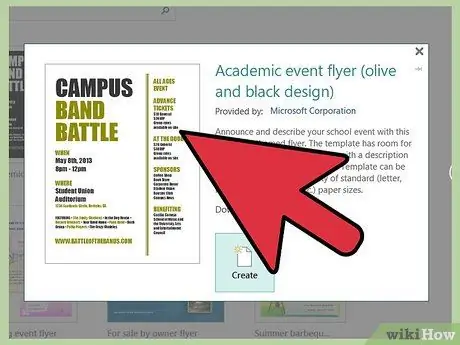
Step 2. Decide whether you will hand out the flyer or mail it
Most flyers are delivered directly to consumers, or left in places where people can take them as a reminder of the event they promote. Flyers for charity events, sales or special offers, on the other hand, are often mailed to specific consumers who may be interested. By adding an address to a flyer in Publisher, you'll create a second (back) page, in the top third of which you'll find space for the destination and sender address. You can enter the address from an Excel worksheet or an Access database. To make the flyer suitable for mailing, follow these steps:
- On Publisher 2003, select "Include" under Customer Address to include an address for a recipient or "None" to not enter it.
- On Publisher 2007 and 2010, check the "Include Customer Address" box to add an address for the recipient.
- The option to include a mailing section on the back of the flyer is not available if you choose to create a flyer from a blank template.
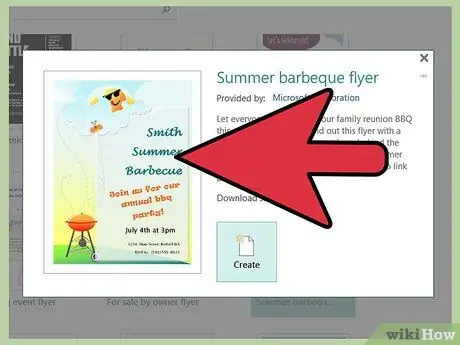
Step 3. Decide if your flyer should include graphics
Some of the available templates include a sunset image as a placeholder and give you the option to include or exclude graphics in the flyer. Inserting a graphic can make the flyer more visually beautiful, particularly if it is an image related to the event, announcement or offer that the flyer promotes. If you keep the placeholder artwork when you create the flyer, you can later edit it with the image of your choice.
- To include a temporary graphic on Publisher 2003, select "Include" under Graphic.
- To include a personal graphic in Publisher 2007 or 2010, check the "Include graphics" box.
- This option is not available if you have chosen to create your flyer from a blank template. However, you can insert a picture or other graphic object with the Insert Picture feature of your version of Publisher.
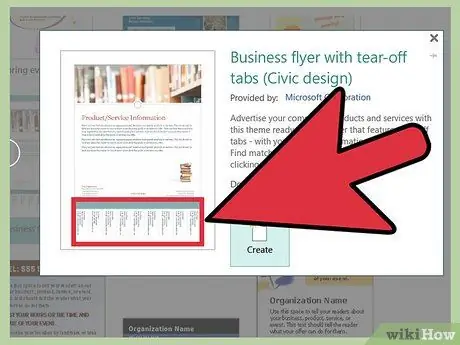
Step 4. Include segments to tear
If you're using the flyer to get information from people who see it, or to promote a sale or special offer, you'll want to add segments to snatch to receive the information or offer a coupon to encourage people to join. The segments to tear drop-down menu offers many options:
- Nobody. Choose this option if your flyer is only to present information to the reader.
- Contact info. Choose this item if your flyer is meant to attract customers, who will be able to rip your contact information without removing the flyer, which will continue to do its job. (Some models are already designed with this type of rip and therefore you will not see the drop-down menu of segments to rip)
- Coupon. Choose this item if your flyer is promoting a sale or special offer and you want to offer a discount to people who respond to your advertisement.
- Order form. Choose this item if your flyer promotes a special offer on a product or service and you want to receive orders from those who read it.
- Reply form. Choose this item if your flyer is promoting a product, service or event and you are looking to find out if anyone is interested and wants more information. (Some models are designed for this purpose and do not allow you to use other segments to tear)
- Registration form. Choose this if your flyer promotes an event that customers will be able to sign up for. Sign-up forms are most often used on posted flyers, while reply forms are better suited to mailed ones. (Some models are designed for this purpose and do not allow you to use other segments to tear)
- The options on segments to tear are not available if you are creating your flyer from scratch.
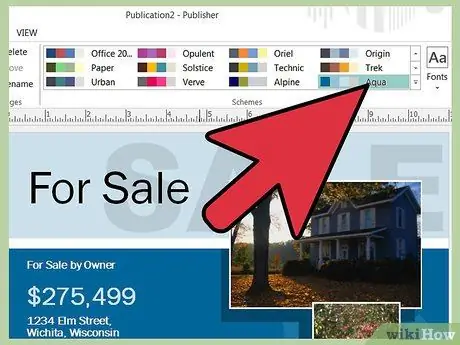
Step 5. Choose the colors and fonts of your flyer
Each flyer template has a default color and font scheme, but if you want to use a different one, you can do so by choosing a new scheme. You will find colors in the Color Scheme drop-down menu and fonts in the Font Scheme drop-down menu.
- You can also create a custom color or font scheme by selecting the "Create New" option from one of the respective drop-down menus.
- If you're creating other Publisher advertising materials, such as brochures, gift cards, or specialty letter papers, you should use the same color schemes and fonts for all of these materials to create a consistent identity for your brand.

Step 6. Enter your company information
If you are using Publisher 2003, the program will ask you for this information the first time you log in. Later, you can recall them from Personal Information in the Edit menu to include them in your flyer. On Publisher 2007 and 2010, you can select your company information from the Business Info drop-down menu or select "Create New" to create a new set of information. This information will be included in the flyer.
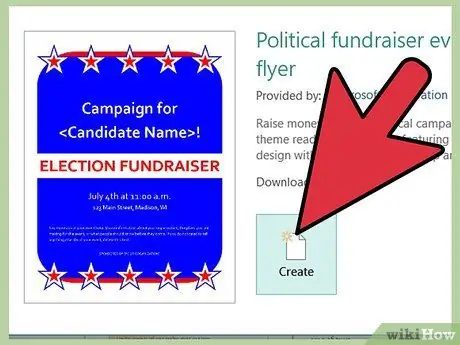
Step 7. Create the flyer
On Publisher 2007 and 2010, click the "Create" button at the bottom of the window to create it. (Publisher 2003 automatically assumes at this point that you are creating a flyer and does not have the Create button.)
At this point, you could print the flyer or create a PDF to email it to your collaborators
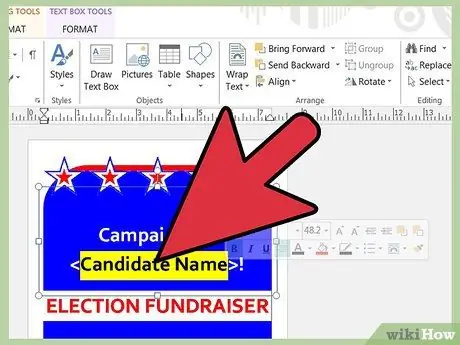
Step 8. Replace the placeholder text with your own content
Click on the text you want to replace and type the new one.
- In most cases the text will be automatically resized to fit the space. If you need to set the text to a certain size, select "Auto Fit Text" from the Format menu and then select "Don't Fit" (Publisher 2003 and 2007) or select "Text Fit" in the Text group of the Format Text Fields ribbon and then select "Do not auto-fit" (Publisher 2010). You can then manually choose a new size for the text.
- Repeat this step for any other text you want to replace, on both sides of the flyer.

Step 9. Replace the temporary images with the ones you prefer
Right click on the image you want to replace, then select "Edit Image" from the context menu and find the path to the image. Repeat this step for any other images you want to replace.
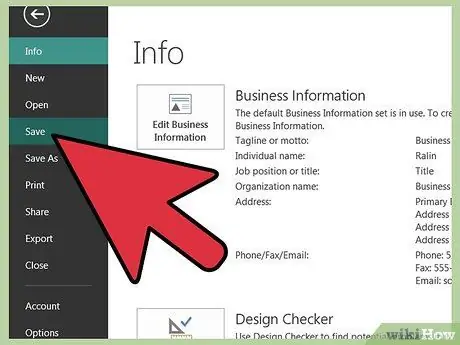
Step 10. Save the flyer
Choose "Save" or "Save As" from the File menu (Publisher 2003 or 2007) or from the menu on the left side of the File tab (Publisher 2010). Choose a descriptive name for your flyer.
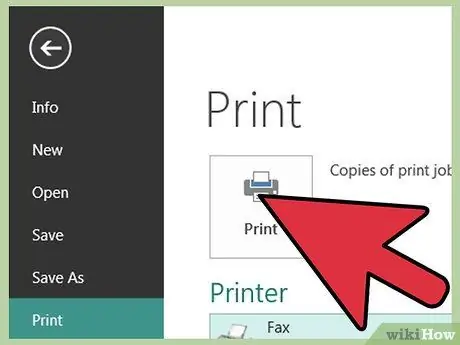
Step 11. Print copies of your flyer if needed
Before printing the flyer for the first time, make sure everything is the way you want it.
If you want to have your flyer printed by a professional, you will need to save it or convert it to PDF format, as this is the format most used by these services
Advice
- When creating a flyer from scratch for the first time, you could create flyers from multiple templates and copy and paste elements from them onto a blank page.
- Limit the types of fonts in your flyer to a minimum. Generally, you shouldn't mix serif and sans serif fonts, although you can use a sans serif font for headlines and a serif font for body text. Reserve the use of bold and italics to emphasize what you write.
- If you include a coupon in your flyer, make sure there is enough information on it about your company, or possibly a logo, so that anyone associated with your company can immediately recognize the coupon as valid.
- Use reasonably, but not perfectly, symmetrical layouts. Using a slightly off-center balance point can make the flyer more visually stimulating, as long as you leave enough space to clearly follow text and images. Most text longer than one line should be left-aligned or justified, but you can use right-aligned text in some cases for emphasis, particularly with styles that use a vertical block of color on one side.
- You can further enhance the look of your flyer by using elements from the Clip Manager, the Style Gallery (Publisher 2003 and 2007), or the Building Blocks group of the ribbon's Insert menu (Publisher 2010).
Warnings
- If you are making a flyer for mailing, do not use lines printed on the address side to indicate where to fold the paper, as it can be difficult to fold exactly on one line.
- Never use capital letters except for titles; a paragraph written this way can be difficult to read. Also avoid using all uppercase decorative fonts.
- Only use single spaces after periods. Two spaces after a period can create formatting problems.






